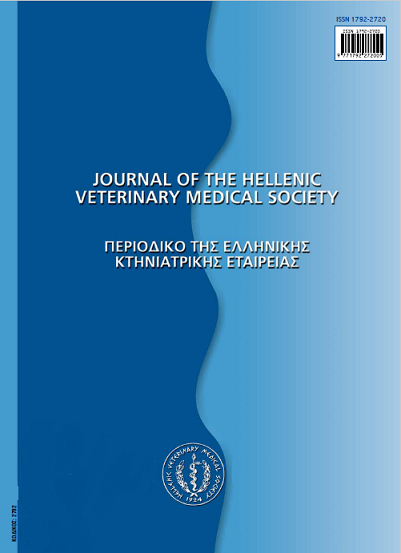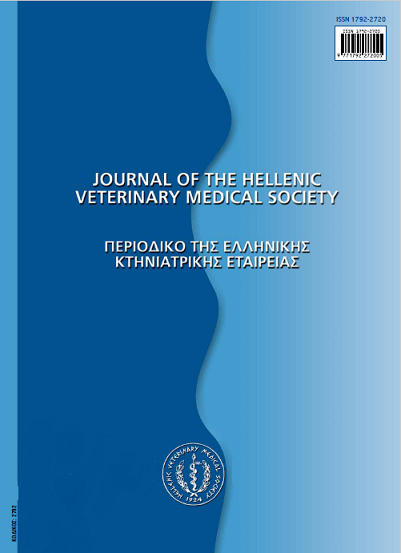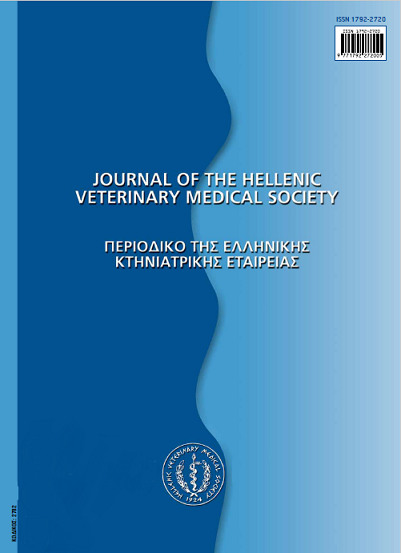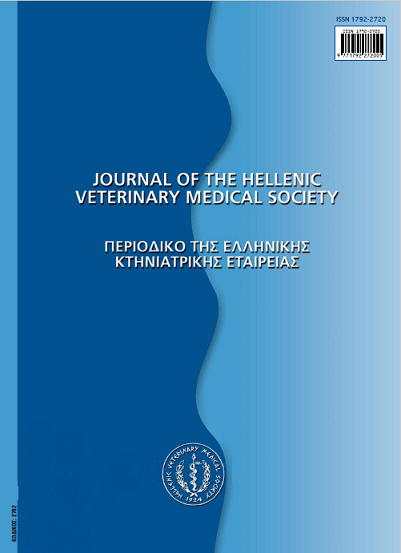Ο έλεγχος της οπλής και η αντιμετώπιση των κυριοτέρων προβλημάτων στην πράξη

Περίληψη
Ο έλεγχος της ευστάθειας της οπλής έχει ιδιαίτερη σημασία στην περίθαλψη του ίππου. Πολύ συχνά η κακή διαμόρφωση ισορροπία της οπλής οδηγεί ή συνδέεται με χωλότητες των άκρων. Στο άρθρο αυτό παρουσιάζονται αρχικά περιστατικά στα οποία η απώλεια της ισορροπίας της οπλής οδήγησε στην εμφάνιση χωλότητας. Στη συνέχεια αναλύονται οι παράγοντες οι οποίοι θα πρέπει να χαρακτηρίζουν μία οπλή, ώστε να αποφεύγονται τα σφάλματα πετάλωσης και παρουσιάζονται τα σημεία από τα οποία μπορείνα εκτιμηθεί μια ευσταθής πετάλωση. Τέλος, γίνεται αναφορά στους τύπους επανορθωτικών πετάλων, οι οποίοι χρησιμοποιούνται συνηθέστερα στην πράξη.
Λεπτομέρειες άρθρου
- Πώς να δημιουργήσετε Αναφορές
-
DIAKAKIS (Ν.ΔΙΑΚΑΚΗΣ) N., MOUSTARDAS (Ν. ΜΟΥΣΤΑΡΔΑΣ) N., & DESIRIS (Α. ΔΕΣΙΡΗΣ) A. (2018). Ο έλεγχος της οπλής και η αντιμετώπιση των κυριοτέρων προβλημάτων στην πράξη. Περιοδικό της Ελληνικής Κτηνιατρικής Εταιρείας, 53(1), 44–45. https://doi.org/10.12681/jhvms.15358
- Τεύχος
- Τόμ. 53 Αρ. 1 (2002)
- Ενότητα
- Research Articles

Αυτή η εργασία είναι αδειοδοτημένη υπό το CC Αναφορά Δημιουργού – Μη Εμπορική Χρήση 4.0.
Οι συγγραφείς των άρθρων που δημοσιεύονται στο περιοδικό διατηρούν τα δικαιώματα πνευματικής ιδιοκτησίας επί των άρθρων τους, δίνοντας στο περιοδικό το δικαίωμα της πρώτης δημοσίευσης.
Άρθρα που δημοσιεύονται στο περιοδικό διατίθενται με άδεια Creative Commons 4.0 Non Commercial και σύμφωνα με την άδεια μπορούν να χρησιμοποιούνται ελεύθερα, με αναφορά στο/στη συγγραφέα και στην πρώτη δημοσίευση για μη κερδοσκοπικούς σκοπούς.
Οι συγγραφείς μπορούν να καταθέσουν το άρθρο σε ιδρυματικό ή άλλο αποθετήριο ή/και να το δημοσιεύσουν σε άλλη έκδοση, με υποχρεωτική την αναφορά πρώτης δημοσίευσης στο J Hellenic Vet Med Soc
Οι συγγραφείς ενθαρρύνονται να καταθέσουν σε αποθετήριο ή να δημοσιεύσουν την εργασία τους στο διαδίκτυο πριν ή κατά τη διαδικασία υποβολής και αξιολόγησής της.








